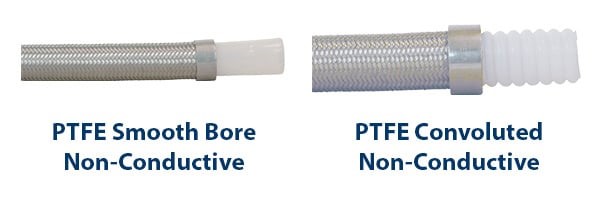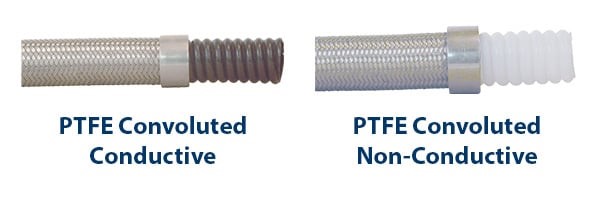
Polytetrafluoroethylene (PTFE), commonly known as "Teflon," is a synthetic fluoropolymer discovered by chemist Roy J. Plunkett in 1938. It is renowned for its exceptional chemical resistance, low coefficient of friction, and high-temperature stability. PTFE exhibits a unique combination of properties that make it invaluable across various industries, ranging from automotive to aerospace.
PTFE's remarkable properties have made it indispensable in numerous industrial applications. Its non-stick nature and resistance to corrosion make it ideal for use in cookware, while its chemical inertness and electrical insulation properties find applications in sectors like chemical processing, electronics, and telecommunications. Additionally, PTFE's biocompatibility has led to its use in medical devices and pharmaceutical equipment.
PTFE was serendipitously discovered by Roy J. Plunkett while working on refrigerants at DuPont. Its unique molecular structure, consisting of carbon and fluorine atoms arranged in a repeating tetrahedral pattern, accounts for its exceptional properties. PTFE is highly resistant to heat, chemicals, and weathering, making it suitable for demanding environments.
Since its discovery, PTFE has found a myriad of applications across various industries. Initially used in military projects like the Manhattan Project for its ability to handle highly corrosive materials, PTFE's versatility has led to its widespread adoption in consumer products, industrial machinery, and scientific equipment.
During World War II, PTFE played a pivotal role in the development of the atomic bomb as it was used to handle uranium hexafluoride gas, a critical component in the uranium enrichment process. This application highlighted PTFE's exceptional chemical resistance and contributed to its recognition as a groundbreaking material.
PTFE hoses and fittings are integral components in industries such as automotive, chemical processing, aerospace, and medical. Their use spans from fluid transfer systems to sealing and insulating components.
In the automotive industry, PTFE hoses are used for fuel lines, brake systems, and hydraulic applications due to their resistance to chemicals and high temperatures.
In the chemical sector, PTFE hoses facilitate the safe transfer of corrosive chemicals and solvents.
In the electrical industry, PTFE insulating materials are employed in wiring, connectors, and circuit boards.
In the medical field, PTFE-coated medical devices ensure biocompatibility and ease of sterilization.
PTFE hoses excel in transporting a wide range of substances, including acids, gases, fuels, and pharmaceuticals, thanks to their inert nature and resistance to chemical degradation.
| Property | PTFE-Lined Hoses | Metal Hoses |
| Weight | Lightweight | Heavier |
| Chemical Resistance | Excellent | Varies depending on material |
| Temperature Tolerance | High | High |
| Flexibility | Excellent | Good |
| Cost Effectiveness | Cost-effective | Higher cost |
| Application Range | Wide | Limited |
PTFE-lined hoses offer several advantages over metal hoses, including their lightweight construction, exceptional chemical resistance, and high-temperature tolerance. These properties make them ideal for demanding applications where corrosion and temperature extremes are a concern.
When selecting between PTFE-lined and metal hoses, factors such as the specific fluid being transported, operating conditions (temperature, pressure), and cost considerations must be taken into account to ensure optimal performance and longevity.

| Property | Smooth Bore PTFE Hoses | Corrugated PTFE Hoses |
| Working Pressure | Higher | Lower |
| Flexibility | Limited | Excellent |
| Drainability | Good | Excellent |
| FDA Certification | Yes | Yes |
| Weight | Heavier | Lighter |
| Lifespan | Longer | Longer |
Smooth bore PTFE hoses are designed for applications requiring higher working pressures and superior cleanliness, making them suitable for pharmaceutical, food processing, and sanitary applications. On the other hand, corrugated PTFE hoses offer enhanced flexibility and drainability, making them ideal for applications where maneuverability and easy cleaning are priorities.
Both smooth bore and corrugated PTFE hoses are FDA-certified for use in food and pharmaceutical applications where cleanliness and hygiene are paramount. Their inert nature and resistance to microbial growth make them safe for conveying food and beverage products without contamination concerns.

Conductive PTFE hoses are specifically engineered to dissipate static electricity, making them suitable for applications involving flammable or explosive materials. Non-conductive PTFE hoses, on the other hand, are used in applications where electrical conductivity is not a concern.
In industries such as petrochemical, aerospace, and electronics manufacturing, where the presence of static electricity poses a risk of ignition or equipment damage, conductive PTFE hoses are essential for maintaining safety and operational integrity.
Conductive PTFE hoses are utilized in fuel transfer systems, chemical processing plants, and paint spraying applications where static discharge can ignite flammable vapors.
Non-conductive PTFE hoses find use in pharmaceutical manufacturing, semiconductor production, and medical device assembly, where avoiding static buildup is crucial for product quality and worker safety.
Nominal I.D. PTFE hoses have a smooth bore inner lining and are available in various sizes to accommodate different applications. True I.D. PTFE hoses, on the other hand, have both smooth bore and corrugated options, with thicker walls for added durability and performance.
Nominal I.D. PTFE hoses are typically used with standard fittings such as JIC and SAE connections, while True I.D. hoses may require specialized fittings to accommodate their thicker walls and unique construction.
Dixon offers a wide range of PTFE hoses in both Nominal and True I.D. series, providing customers with options tailored to their specific requirements. These hoses are available in various sizes, materials, and configurations to suit different applications and operating conditions.
In conclusion, PTFE hoses and fittings play a vital role in numerous industries due to their exceptional performance and versatility. From automotive and chemical processing to pharmaceutical and aerospace applications, PTFE components offer unparalleled chemical resistance, temperature tolerance, and reliability. With advancements like GSM armor, conductive properties, and options for smooth bore or corrugated construction, PTFE hoses continue to evolve to meet the evolving needs of modern industrial applications. Dixon's comprehensive range of PTFE products, coupled with their expertise and support services, makes them a preferred choice for businesses seeking reliable fluid handling solutions.
Feel free to leave your message on our board. If you're looking to inquire about prices or place an order, this is the right place! Let us know the details of your needs, and our team will get back to you with a personalized quote as quickly as possible. We're here to ensure your experience is seamless and satisfactory. Share your requirements or ask any questions you might have - we're eager to assist and look forward to doing business with you!
Name:Tim
Phone:+86-15716151880
Email:[email protected]
Company:BEANT
Address:No. 28, Luoshen Road, Luoshe Town, Huishan District, Wuxi City, Jiangsu Province
